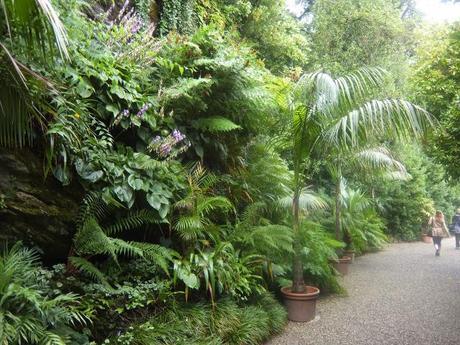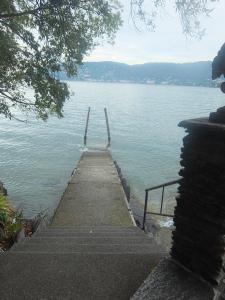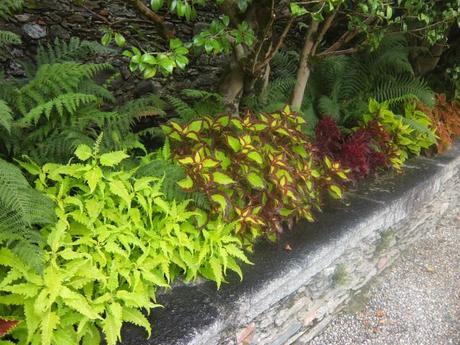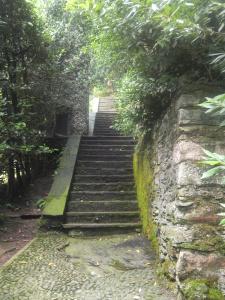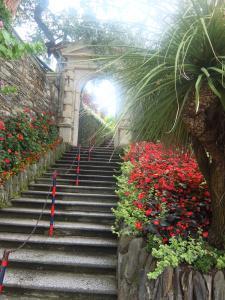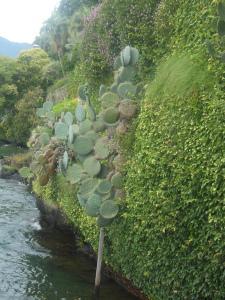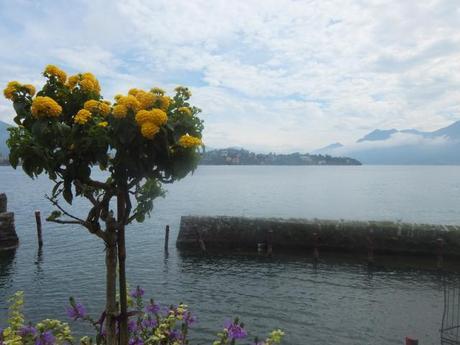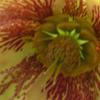Now some of my readers have kindly described my garden as lush when they saw my EOMV photos but I don’t see it this way. For me the photo above shows a lush garden. The garden in question is Isola Madre, the garden I discovered on holiday in Italy which was the highlight of our trip for me.
Isola Madre is the third island in the Borromea Bay and a sister island to Isola Bella. Whilst
Isola Bella is a personal wedding cake of a garden, Isola Madre is now a botanical garden and a partner RHS garden – so I got to use my RHS card twice on holiday.
As with Isola Bella I found the vistas and glimpses through trees and down paths quite captivating.
The standard of horticulture is exceptional not surprising as the curator, Gianfranco Giustina, was awarded a Veitch medal by the RHS in 2014. I knew I was in for a good garden visit when I saw the coleus, which I’m not that keen on, looking so good amongst ferns. In fact there were many ferns, including various tree ferns, so I was very happy. Not only were the plants generally labelled but the guide book also gave lots of details about key plants.
As with the Isola Bella the garden paths lead you up to the high part of the island. The garden has a wealth of magnolias, rhododendrons and camellias but sadly we were a little late in the season to see these in flower.
The ferns and the bamboos do well due to the climate of the region as despite the temperatures being in the high 20s/low 30s there was rain many days and so the plants were thriving.
The highlight of the garden is the oldest Cypress of Cashmir in Europe. If you look closely
at some of the photos you will see lots of wires leading to this tree and there is an amazing story behind this. In 2006 the tree was toppled by a tornado. Whilst many would be sad and think that was the end of a tree which had been grown from seed collected from the Himalayas in 1846, the staff on Isola Madre had other ideas. With the help of helicopters and three huge cranes they righted the tree. Then they covered the root ball with constantly damp sheeting and the leaves were sprayed with anti-transpirants. The result is that the tree has re-established and is growing well – what an achievement.
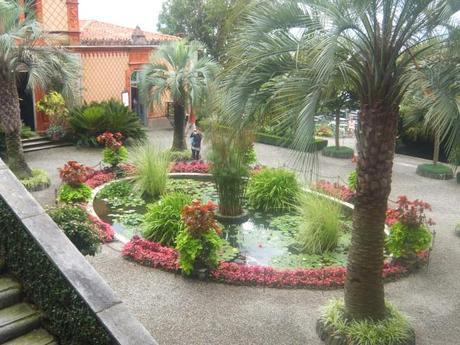
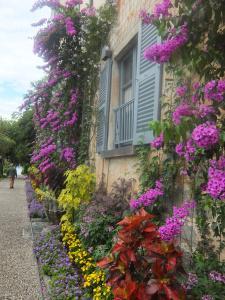
Having explored the shady end of the lower island you find yourself up by the house and the Chapel Square and the Nymphaeas pond. The planting is more colourful around the house with the use of quite a bit of bedding and annuals. Whilst I wasn’t that keen on the garish colours on Isola Bella I did like the same plants on Isola Madre. I think this is because the permanent planting tones them down. The bright colours work very well against the cool color of the walls and I think the blue/grey of the woodwork is a good foil. The borders are quite narrow and it was impressive how many plants had been shoe-horned into the space. No doubt they are watered and fed a lot.
We did spot the odd gardener but they were generally working in the areas which weren’t open or having a break for lunch. Many of the annuals were kept in check by the white peacocks who strutted around and seemed to have quite a thing about the Cleome which were growing along the bottom of the house walls.
One of the things that made me smile when visiting this garden was the range of plants growing there and planted permanently outside. The cactus growing on the cliff side of the island particularly amused me as it seemed so incongruous to see a huge cactus hanging over a large inland lake.
It was views like this which add to the magic for me and will stay in my mind for some time to come.
